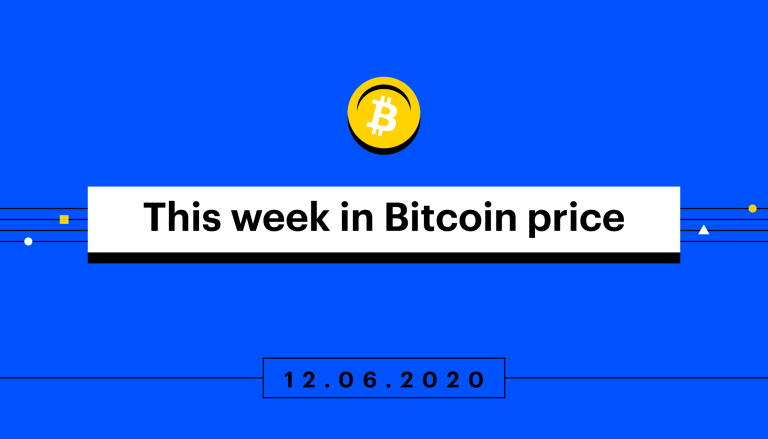This week in Bitcoin price: Nov 29-Dec 6

Bitcoin hit its all-time high of $19,900 on December 1st, before bouncing between $18,500 and $19,500 for the rest of the week. But what has been driving Bitcoin’s 2020 run – and how does it compare to 2017’s bull market? Get the intel you need in our weekly dispatch from Coinbase researchers.
Published on December 6, 2020
The big picture
The major headline this week, of course, is that Bitcoin finally cracked its late-2017 all-time high, landing at $19,900 on December 1st. As is often the case with Bitcoin, however, the story hasn’t been one of a straightforward upward trajectory. As soon as it peaked, volatility returned — with Bitcoin dipping back into the $18,500 to $19,500 range for the rest of the week. But if we look into the numbers more closely we start to see some interesting trends emerge, especially around how this boom compares to the last one. For one, we see lower volatility compared to 2017 — and this dampening seems to be (in part at least) connected to Bitcoin finally catching on with big institutional investors like hedge funds, tech companies, and asset management giants including Blackrock. For many potential Bitcoin investors today, the primary question is, “How is this bull run different from 2017?”

Key points
Let’s dive into some of the evidence pointing to the ways the 2020 bull run seems to differ from 2017. Whereas retail interest — that is, individual and often amateur traders — drove 2017’s Bitcoin spike, institutional interest is the core theme of 2020. This year is marked by remarkable global economic shifts, such as the acceleration toward cryptocurrencies alongside increasing levels of government debt and monetary expansion. Furthermore, there is growing evidence that Bitcoin is maturing as a global asset class, with more robust market infrastructure and decreased volatility compared to 2017.
In a conversation with the former Governor of the Bank of England, the CEO of Blackrock — the world’s largest asset manager with $7 trillion in assets under custody — says he believes that Bitcoin is gaining legitimacy and has the potential to “evolve into a global market” asset.
Meanwhile, AllianceBernstein, an investment firm with $631 billion in assets under management published research indicating that “the coronavirus pandemic has changed the policy environment, debt levels, and diversification options for investors, and that this has all made Bitcoin an attractive asset…” Furthermore, “The strategist said that Bitcoin's volatility has significantly declined in the last three years, which marks it a more attractive store of value.”
MicroStrategy – an investment-analytics and cloud-computing firm – made waves this year by becoming the first publicly-traded company to put a major portion of its liquid assets (an estimated $250 million) into Bitcoin. On December 1st, Coinbase revealed that it was the primary execution partner for Microstrategy’s purchase. Later in the week, Microstrategy announced that it is doubling down on its Bitcoin bet, with Bloomberg reporting that “The company paid $50 million for more of the world’s largest cryptocurrency at an average purchase price of $19,427.”
For a deeper dive into the forces shaping Bitcoin’s rally, check out “Bitcoin is Winning the Covid-19 Monetary Revolution” by renowned Harvard economic historian Niall Ferguson. Ferguson concludes that “We are living through a monetary revolution so multifaceted that few of us comprehend its full extent. The technological transformation of the internet is driving this revolution. The pandemic of 2020 has accelerated it. To illustrate the extent of our confusion, consider the divergent performance of three forms of money this year: the U.S. dollar, gold, and Bitcoin.”

One popular idea about Bitcoin is that its price tends to be roughly correlated with gold. But that seems to no longer be true. As of December 6th, Bitcoin has grown by over 170 percent since the start of 2020. At the same time, gold has appreciated by around 22 percent while the dollar index (which measures U.S. dollar against a variety of global currencies) has declined by six percent. If this trend continues, we might see more variations of this Reuters headline from November 30th: “Dollar plummets on U.S. stimulus hopes; Bitcoin hits all-time peak.”
Social trends
As prices for Bitcoin and other cryptocurrencies like Ethereum grew throughout November, social-media conversations followed. Tweet volume for some of the biggest cryptocurrencies increased by 38 percent in November, reaching its highest total this year. Unsurprisingly, the biggest share of the conversations happened around Bitcoin.

Want to read more?
Here are a few of the week’s crypto headlines recommended by the analytics desk.